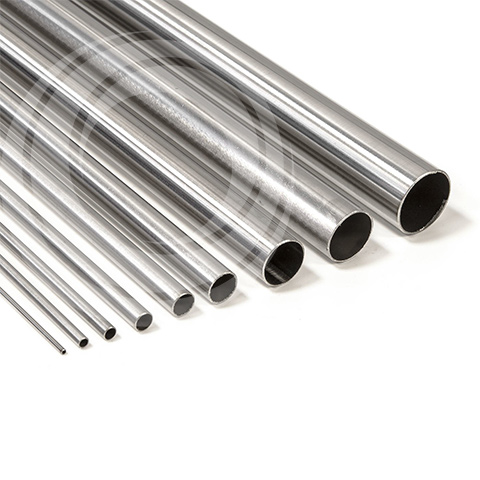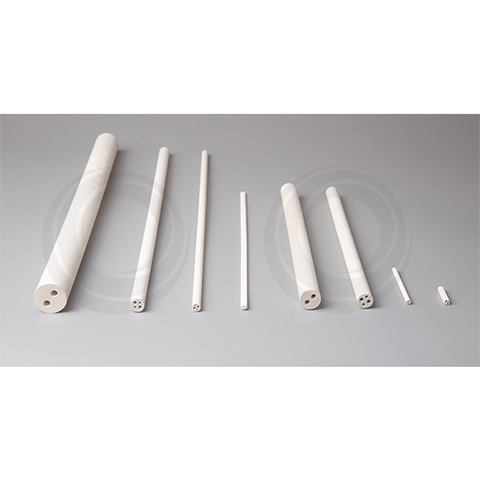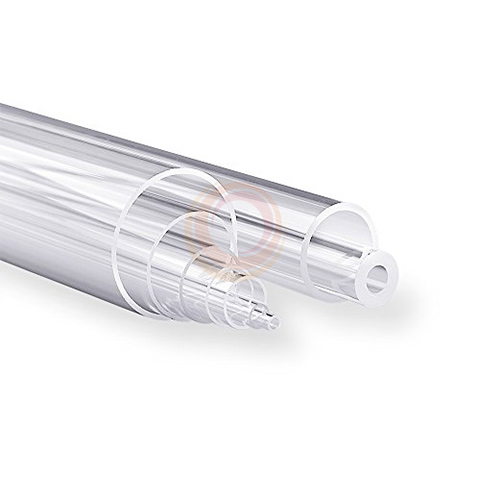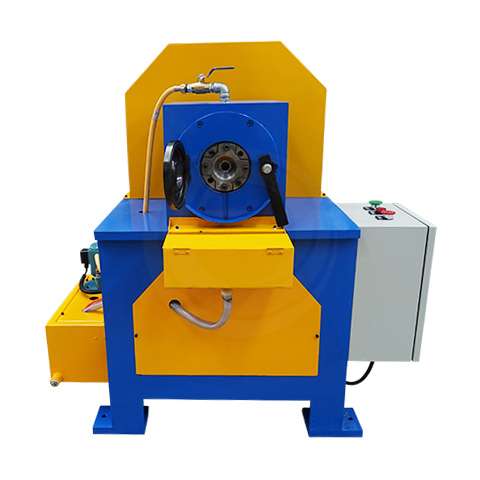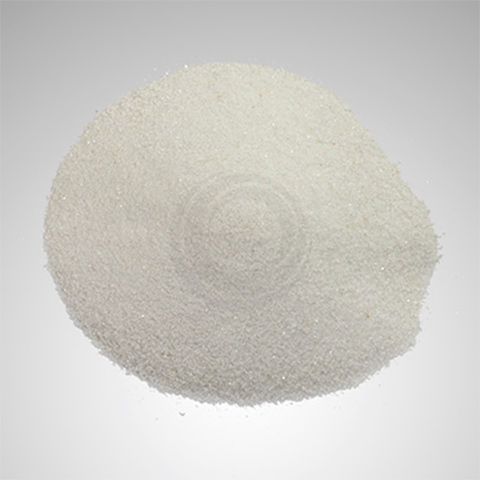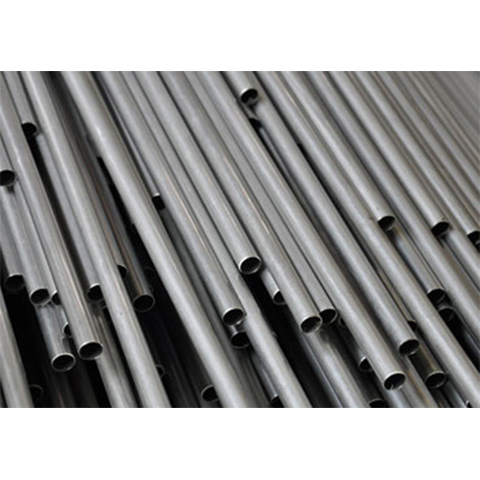Red Copper Tube- For Refrigeration | Air Conditioning
Because of its strong and wear-resistant properties, Copper Tubes are often used in electrical, industrial and construction industries. Copper tubes can be produced by extrusion, continuous casting and rolling, and up-drawing methods. Copper Tube is an important raw material for the processing and manufacturing of refrigeration equipment, and it has two main uses:
- Making heat exchangers
- Make connecting tubes and Fittings
The copper tube used in the refrigeration industry is red copper, with a copper content of more than 99.90%, which is widely used in various fields of industry and civil use, and plays an important role. Air conditioning copper tube is made of pure copper, with excellent physical and chemical properties, pure copper texture gives the copper tube unique flexibility and ductility, so that it can adapt to a variety of complex installation environment. In the air conditioning system, copper tubes are mainly responsible for the transmission of refrigerant (freon, commonly known as snow). It acts as an efficient transport channel, allowing the refrigerant to flow freely between the evaporator, condenser and other components, thereby enabling the exchange of heat and providing us with comfortable temperature regulation.
There are three main types of copper tubes for air conditioners: TP2, T2, and TU1.
- TP2 is phosphorus deoxidized copper, containing 0.015-0.04% phosphorus, with good welding and cold bending properties, in the air conditioning refrigeration connection tube, stove gas tube connection tube, electric heater and other manufacturing fields are widely used.
- T2 is pure copper, copper content is higher than 99.90%, when the user has high electrical conductivity requirements for the material, T2 copper pipe will be the first choice.
- TU1 is oxygen-free copper, copper content ≥99.97%, oxygen and impurity content is very low, high purity, excellent electrical and thermal conductivity, good ductility, processing performance and welding, corrosion resistance, cold resistance are good. Due to the high requirements and high costs of its production, the price of its products is much higher than that of other categories of red copper tubes.
| Types | Main Characteristics | Use |
| Pure copper(T1/T2/T3) | It has good electrical and thermal conductivity, corrosion resistance and processing properties, and can be welded and brazed. Trace amounts of oxygen have little effect on electrical conductivity, thermal conductivity and processability, but it is easy to cause "hydrogen disease ", and it is not suitable for processing (annealing, welding, etc.) and use in high temperature (such as 370℃) reducing atmosphere. | Used as conductive, thermal conductive and corrosion-resistant equipment. For example, T1 and T2 are used as wires, cables, conductive screws, blasting detonators, chemical evaporators, storage containers and various pipelines. T3 is used as a general Copper. Such as electrical switches, rivets, nozzles, oil pipes and other pipes. |
|
|
|
|
Oxygen-free copper
(TU1、TU2) | High purity, excellent electrical and thermal conductivity, no or very little "hydrogen disease"; good processing performance, welding, corrosion resistance, and cold resistance。 | Mainly used as electric vacuum instrument meter device. | |
| Phosphate-oxygen copper removal (TP1、TP2) | It has good welding performance and cold bending performance, and generally has no tendency of "hydrogen disease". It can be processed and used in reducing atmosphere, but it is not suitable to be processed and used in oxidizing atmosphere. TP1 has less phosphorus residue than TP2, so its electrical and thermal conductivity is higher than that of TP2. | Mainly used in tube applications, it can also be supplied in plates, strips, rods, and wires. Used as gasoline or gas delivery tubes, drainage tubes, condenser tubes, mine tubes, evaporators, heat exchangers, and train car parts. | |
silver-copper
(TAg0.1) | Adding a small amount of silver to copper can significantly increase the softening temperature (recrystallization temperature) and creep strength, but rarely reduce the electrical and thermal conductivity and plasticity of copper. Practical silver copper is generally cold hardening to improve its strength. It has good wear resistance, electrical contact and corrosion resistance, such as when made into a tram line, the practical life is 2-4 times higher than the general hard copper. | Used as heat-resistant and conductive equipment. Such as motor rectifier sheet, generator rotor conductor, spot welding electrode, communication line, lead, wire, vacuum tube material. | |
Specifications of copper pipes
Copper Straight Pipe C12200(TP2)
Product Specifications:
| Outer diameter\wall thickness mm\mm | 0.30 | 0.30-0.35 | 0.35-0.45 | 0.45-0.50 | 0.50-0.60 | 0.60-0.75 | 0.75-1.0 | 1.0-1.25 | 1.25-1.5 | 1.5-2.0 | 2.0-3.5 |
| 3.18 | - | - | O | O | O | O | - | - | - | - | - |
| 3.18-4.0 | - | O | O | O | O | O | O | - | - | - | - |
| 4.0-7.5 | - | O | O | O | O | O | O | - | - | - | - |
| 7.5-9.52 | O | O | O | O | O | O | O | O | - | - | - |
| 9.52-12.7 | - | - | O | O | O | O | O | O | O | O | - |
| 12.7-16.0 | - | - | O | O | O | O | O | O | O | O | O |
| 16.0-22.0 | - | - | O | O | O | O | O | O | O | O | O |
| 22.0-30.0 | - | - | - | - | O | O | O | O | O | O | O |
| 30.0-35.0 | - | - | - | - | - | O | O | O | O | O | O |
| 35.0-40.0 | - | - | - | - | - | - | O | O | O | O | O |
| 40.0-55.0 | - | - | - | - | - | - | - | - | O | O | O |
| 55.0-85.0 | - | - | - | - | - | - | - | - | - | O | O |
| 85.0-108.0 | - | - | - | - | - | - | - | - | - | - | O |
Packaging method: add plugs at both ends, wrap the packaging bag, and bundle
Capillary Copper Tube C12200(TP2)
Usage: air conditioning refrigeration, gas wall-hung furnace, etc
State: soft, hard
Standard: GB/T1531
Product Specifications:
| Product Code | Outer Diameter (mm) | Inner Diameter (mm) |
| S8718 | 1.83 | 0.66 |
| S8719 | 1.83 | 0.711 |
| S8720 | 2.06 | 0.787 |
| S8721 | 2.06 | 0.838 |
| S8722 | 2.21 | 0.914 |
| S8723 | 2.21 | 0.991 |
| S8724 | 2.36 | 1.067 |
| S8725 | 2.46 | 1.168 |
| S8726 | 2.51 | 1.245 |
| S8727 | 2.69 | 1.37 |
| S8728 | 2.84 | 1.5 |
| S8729 | 3.18 | 1.63 |
| S8730 | 3.18 | 1.78 |
| S8731 | 3.18 | 1.91 |
Female Copper Tube C12200(TP2)
Usage: High-efficiency heat exchanger tubes are widely used in the air conditioning and refrigeration industry
State: soft, hard
Standard: GB/T20928 EN12735
Product Specifications:
| specification | OD (MM) | Inner Diameter ID (MM) | Bottom wall thickness TW(MM) | Tooth height Hf (MM) | Total wall thickness TWT (MM) | The top corner of the teeth is α | Spiral angle β | Number of threads N/strip |
| φ7.00*0.27+0.15-53-18 | 7.00 | 6.16 | 0.27 | 0.15 | 0.42 | 53 | 18 | 60 |
| φ7.00*0.25+0.18-40-18 | 7.00 | 6.14 | 0.25 | 0.18 | 0.43 | 44 | 18 | 50 |
| φ7.00*0.25+0.22-22-16 | 7.00 | 6.06 | 0.25 | 0.22 | 0.47 | 22 | 16 | 54 |
| φ9.52*0.28+0.15-53-18 | 9.52 | 8.66 | 0.28 | 0.15 | 0.43 | 53 | 18 | 60 |
| φ9.52*0.30+0.20-53-18 | 9.52 | 8.52 | 0.30 | 0.20 | 0.50 | 53 | 18 | 60 |
| φ9.52*0.27+0.16-30-18 | 9.52 | 8.66 | 0.27 | 0.16 | 0.43 | 30 | 18 | 70 |
Note: The calculation method of the inner diameter: ID=OD-2*TWT
Glossy large coil
Usage: refrigeration, heating, heat exchanger, oil pipe, water pipe, gas pipe
State: Soft state
Standard: GB/T17791; GB/T1527; GB/T188033-2017; YS/T450; ASTMB280; ASTMB68; ASTMB75; EN12735; AS1571; JIS H3300; EN1057。
Product Specifications:
| Outer diameter/wall thickness mm\mm | 0.4 | 0.4-0.45 | 0.45-0.55 | 0.55-0.65 | 0.65-0.7 | 0.7-0.8 | 0.8-0.9 | 0.9-1.0 | 1.0-1.1 | 1.1-1.2 | 1.25-1.5 |
| 3.18 | O | O | O | O | O | O | O | - | - | - | - |
| 3.18-4.76 | O | O | O | O | O | O | O | O | O | - | - |
| 4.76-9.5 | - | O | O | O | O | O | O | O | O | O | - |
| 9.5-10.0 | - | O | O | O | O | O | O | O | O | O | O |
| 10.0-12.8 | - | - | O | O | O | O | O | O | O | O | O |
| 12.8-14.0 | - | - | - | O | O | O | O | O | O | O | O |
| 14.0-16.0 | - | - | - | - | O | O | O | O | O | O | O |
| 16.0-19.05 | - | - | - | - | O | O | O | O | O | O | O |
| 19.05-22 | - | - | - | - | - | - | - | O | O | O | O |
| 22-28 | - | - | - | - | - | - | - | O | O | O | O |
Packing method: wooden pallet bag
Commonly used air conditioner size description
| 1P | φ6.52 and φ9.52 |
| 1.5P | φ6.52 and φ12.7 |
| 2P | φ6.52 and φ12.7 |
| 3P | φ6.52 and φ15.88; |
| φ9.52 and φ15.88 |
| 5P | φ9.52 and φ19.05 |
| φ12.7 and φ19.05 |
| φ12.7 and φ15.88 |
Mosquito coil coil
Usage: air conditioning and refrigeration, water pipes, air pipes, air conditioning installation and maintenance pipes
State: Soft state
Standard: GB/T17791; GB/T1527; GB/T188033-2017; YS/T450; ASTMB280; ASTMB68; ASTMB75; EN12735; AS1571; JIS H3300; EN1057
Product Specifications:
| OD | Thickness | Length |
| 4.76 | 0.76 | 15m can be customized |
| 6.35 | 0.76 | 15m can be customized |
| 7.94 | 0.81 | 15m can be customized |
| 9.52 | 0.81 | 15m can be customized |
| 12.7 | 0.81 | 15m can be customized |
| 15.88 | 0.88 | 15m can be customized |
| 19.05 | 0.88 | 15m can be customized |
| 22.22 | 1.14 | 15m can be customized |
Packing method: Single piece sealed with a plastic bag and put into a carton
Packing Volume:
| Outer Diameter (mm) | Volume (m³) | Quantity per Case (PCS) |
| 6.35 | 0.027 | 15 |
| 9.52 | 0.032 | 10 |
| 12.7 | 0.045 | 8 |
| 15.9 | 0.048 | 5 |
| 19.05 | 0.06 | 5 |
Insulated Copper Pipe C12200(TP2)
Usage: Used as a refrigerant circulation channel for indoor and outdoor units of various large and medium-sized central air conditioners and household air conditioners
State: soft, hard, semi-hard
Standard: ASTM; B280; EN12735; AS1571
| Product number | Product Description: |
| S8691 | Insulation double tube 1/4" + 3/8" * 3m soft state |
| S8692 | Insulation double tube 1/4" + 1/2" * 3m soft state |
| S8693 | Insulation double tube 1/4" + 5/8" * 3m soft state |
| S8694 | Insulation double tube 3/8" + 1/2" * 3m soft |
| S8695 | Insulation double tube 3/8" + 5/8" * 3m soft |
| S8715 | Insulation double tube 3/8" + 3/4" * 3m soft state |
| S8716 | Insulation double tube 1/2" + 3/4" * 3m soft state |
| S8686 | Insulated single tube 1/4" * 3m soft |
| S8687 | Insulated single tube 3/8" * 3m soft |
| S8688 | Insulated single tube 1/2" * 3m soft |
| S8689 | Insulated single tube 5/8" * 3m soft state |
| S8690 | Insulated single tube 3/4" * 3m soft |
Specific classification of air conditioning copper tube
By material
- Oxygen-free copper: including high purity oxygen-free copper (TU0, TU1, TU2) and phosphorus deoxidized copper (TUP, TP1, TP2, etc.), characterized by very little oxygen content, a small amount of deoxidizer remains in deoxidized copper;
- Aerobic copper: mainly ordinary pure copper (T1, T2, T3, etc.) and tough copper, characterized by high oxygen content;
- Special copper: there are arsenic copper, silver copper, tellurium copper, etc., which are characterized by adding different trace alloying elements to achieve the purpose of improving the comprehensive performance of the material.
- Brass tube: copper-zinc alloy tube. The number after the H letter in the grade often represents the middle value of its copper content, and the zinc content is the remaining amount. Brass Tubes of different grades, as the copper content becomes higher and higher, generally show better quality and elongation performance, and are mainly used as water tubes and water-related connectors.
According to the hardness: soft copper tube and hard copper tube
- Copper tube, also known as flexible copper tube, is a copper tube that has been annealed to enhance its flexibility. This type of copper tube is easy to bend and form by hand and is suitable for situations that require complex wiring, such as residential water mains or HVAC systems.
- Hard copper tubes, with thicker walls, are suitable for higher pressure and temperature environments and are commonly used in main water supply, gas lines and industrial applications.
Divided by refrigerant: ordinary air conditioning copper pipe and degreased air conditioning copper pipe
- Ordinary air conditioning copper tube is mainly used for R22, the pressure is controlled at 0.98MPa.
- Degreasing air conditioning copper tube: also called "degreasing air conditioning copper tube", mainly used for R410 and other new refrigerant, pressure control at 1.8MPa.
The price of 410 air conditioning copper tube on the market is generally more expensive than the price of R22 air conditioning copper tube. In fact, not necessarily. Since most of the 410 air conditioning copper tubes use extrusion technology, the wall thickness of the copper tubes can be made thinner while withstanding high pressure. This reduces the weight of the copper tube per meter, making the copper tube lighter in weight with the same number of meters.
Judgment of Copper Tube Quality
Appearance observation
The more intuitive way to judge the quality of copper tubes is to observe its appearance. Looking at the color of the copper tubes first, and make different color judgments based on the type of copper tubes purchased. For example, red copper tubes. Generally, reddish copper is of better quality, while inferior copper generally contains more impurities.
Internal and external identification
Good quality copper tubes have a higher copper content and will have better extensibility, so good copper tubes have a deep line. We can use tools to cut open the outer wall of the copper tube to see if the inside and outside are consistent. If the inside and outside walls are made of the same material, it means that the overall quality of the copper tube is high relatively; but if the color or other aspects are different inside and outside, indicating that its purity is not high enough and some other metals are added to it.
Bending test
The processed copper tubes are mainly divided into three types: hard, semi-hard and soft. Different forms of copper tubes have different flexibility. Therefore, it is a simple and easy method to judge the quality of copper tubes by bending them. Better quality copper tubes are easier to bend. If bending is difficult or cracks appear on the surface of the copper tube after bending, it indicates that the quality of the copper tube is not very good.
Comprehensive inspection
The three methods introduced above are simple and easy to implement and can be used for daily judgment. But if you want to obtain accurate and strict data, you need to conduct comprehensive inspections through various instruments and equipment. The inspection items include dimensional deviation, mechanical properties, process performance, chemical composition, grain size, eddy current flaw detection, etc.
Characteristics of Air Conditioning Copper Tube
- Material advantages: Copper is a highly stable metal, which allows air conditioning copper tubes to maintain their performance under various environmental conditions. It has good plasticity and can be easily processed into different shapes and sizes to meet diverse air conditioning design needs.
- Thermal conductivity: The thermal conductivity of air conditioning copper tubes is excellent. It can quickly conduct heat from one end to the other, allowing the refrigerant to efficiently exchange heat within the copper tube. This efficient thermal conductivity greatly improves the cooling and heating efficiency of the air conditioner and shortens the time required to reach a comfortable temperature.
- Corrosion resistance: In humid and complex environments, air conditioning copper tube can maintain a good condition. A thin oxide film will be formed on its surface. This oxide film is like a layer of strong protective armor, effectively resisting the erosion of corrosive substances from the outside and extending the service life of the copper tube.
- Service life: Combining its material advantages, thermal conductivity and corrosion resistance, air conditioning copper tubes have a long service life. It can work stably in the air conditioning system for many years, bringing users a long-lasting comfortable experience and reducing the trouble of frequent parts replacement.
Difference between R22 Refrigerant and R410A Refrigerant
R22 refrigerant is one of the most widely used refrigerants in the past. The chemical name of R22 refrigerant is difluorochloromethane and it belongs to the hydrochlorofluorocarbons. Because R22 refrigerant is very harmful to the ozone layer, the Montreal Protocol stipulates that it will be completely phased out by 2020. Now many manufacturers have stopped producing air conditioners which using R22 refrigerant.
R410A refrigerant is recognized currently in the world as the most suitable and environmentally friendly refrigerant that can replace R22. It has been popularized in Europe, the United States, Japan, China and other countries. R410A refrigerant is a new type of refrigerant. R410A refrigerant is composed of two quasi-azeotropic mixtures, mainly composed of hydrogen, fluorine and carbon elements. R410A refrigerant has the characteristics of stability, non-toxicity and superior performance. Since R410A refrigerant does not contain chlorine, it will not destroy the ozone layer. And the performance of air conditioners using R410A refrigerant will be better.

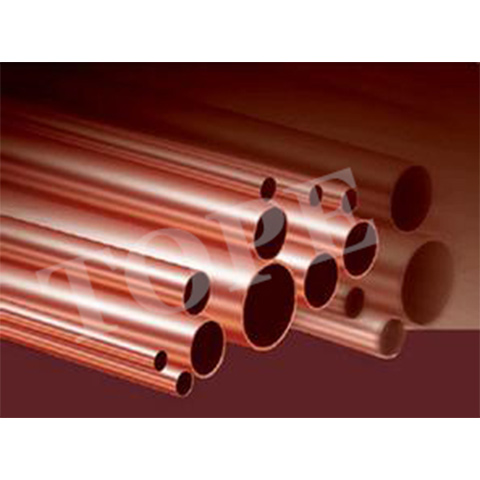
.jpg)
.jpg)
.jpg)

.jpg)

